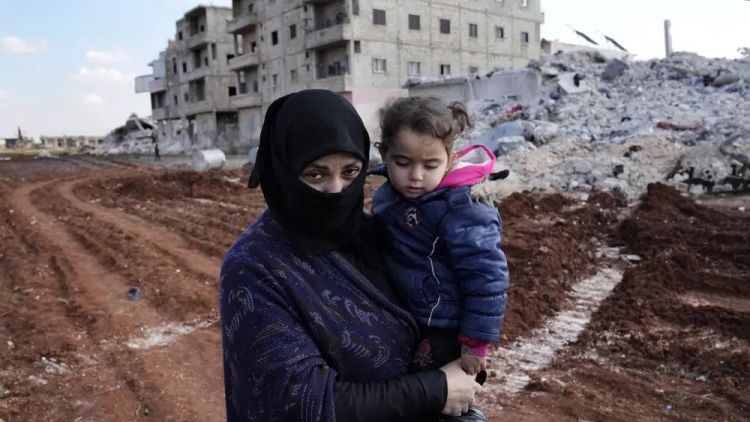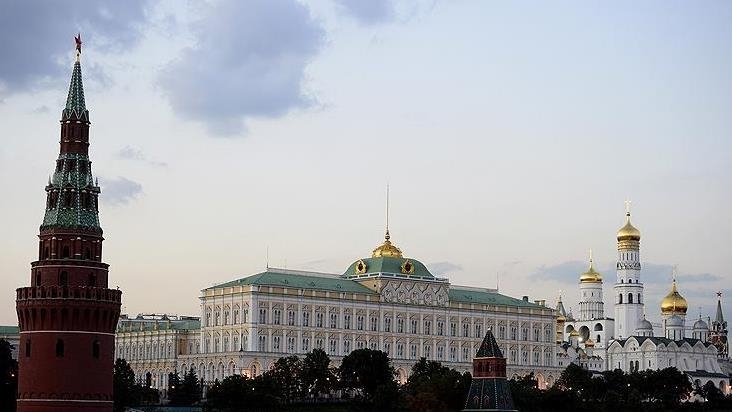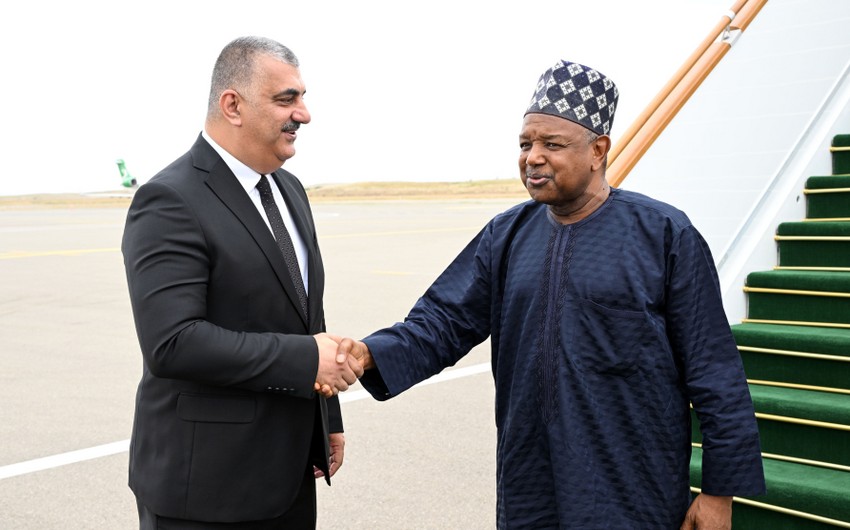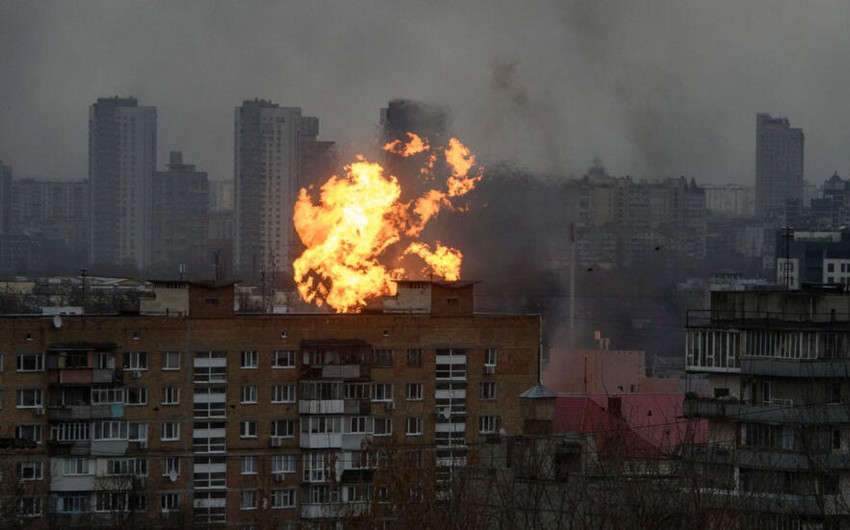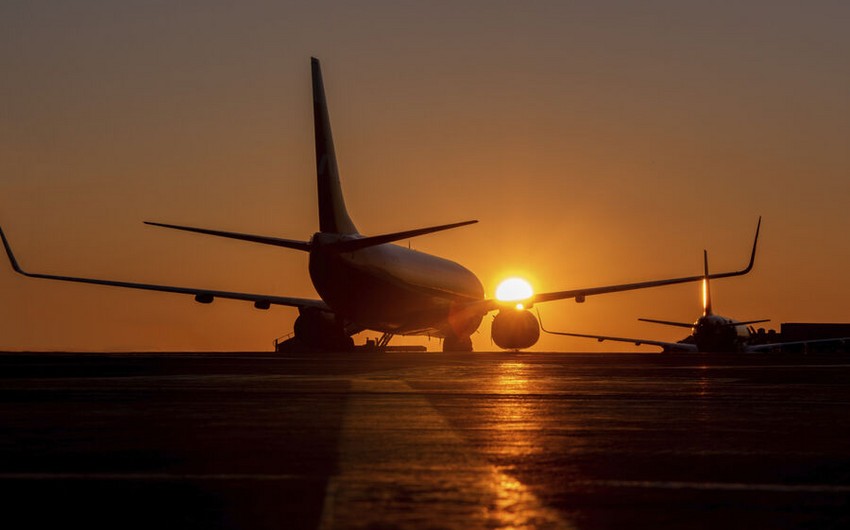Draped in a heavy wool shawl against the cold, Ayesha dragged her feet, her toddler granddaughter trailing behind her, as they made the 15-minute walk from her tent to the nearest bathroom in a nearby building, the only place they have to wash.
Seven days after the earthquake leveled their home in the northwest Syrian town of Atareb, the 43-year-old still has no access to water, electricity or heat for her and 11 family members, all crammed into a single tent.
“When I look at our house, I wonder how did anyone come out alive?” Ayesha said. “Maybe it would have been better if I died,” she added. “I came from under that rubble carrying the rubble of the whole world on my shoulders.”
She doesn’t know how much more she and other Syrians can take. Women in particular have shouldered the responsibility of keeping shattered families together during the past 12 years of civil war. The conflict and economic collapse left millions of people dependent on international aid. Now added to the litany of hardships is destruction from the earthquake, which killed tens of thousands and left millions homeless in southern Turkey and northern Syria.
With hospitals swamped by quake victims, Ayesha can’t get medical services to treat and monitor her liver disease. She and her husband both lost their sources of income in the quake. His taxi was crushed, and her stock of clothes that she once sold to neighbors was destroyed.
They have nothing to provide for their six children and their five grandchildren, including two she took in after one of her sons was killed in the war. They have to share mattresses to sleep in their tent.
“If hardships are a sign of the love of God, it means God really loves the Syrian people,” Ayesha said, breaking out in tears. Like most women in this conservative community, she spoke on condition her last name be withheld.
Their tent is in a camp for quake victims in Atareb, part of the last opposition-held territory in northwest Syria, which has seen bombardment and fighting for years. Walking between rows of destroyed homes in the town, it is hard to distinguish which collapsed from the quake and which from intense military operations at the height of fighting.
For Syrian women, quake adds disaster on top of war’s pain
By SARAH EL DEEB and FAY ABOUELGASIM
5 minutes ago
Ayesha, who lost her home in the devastating earthquake, carries her granddaughter in Atareb, Syria, Sunday, Feb. 12, 2023. After the earthquake, the 43-year-old has had no access to water, electricity, or heat for her and 11 other family members, crammed into a tent after their home in the northwest Syrian town of Atareb was leveled. Now added to the litany of hardships for women is destruction from the earthquake, which killed tens of thousands and left millions more homeless in southern Turkey and northern Syria. (AP Photo/Hussein Malla)
1 of 9
Ayesha, who lost her home in the devastating earthquake, carries her granddaughter in Atareb, Syria, Sunday, Feb. 12, 2023. After the earthquake, the 43-year-old has had no access to water, electricity, or heat for her and 11 other family members, crammed into a tent after their home in the northwest Syrian town of Atareb was leveled. Now added to the litany of hardships for women is destruction from the earthquake, which killed tens of thousands and left millions more homeless in southern Turkey and northern Syria. (AP Photo/Hussein Malla)
ATAREB, Syria (AP) — Draped in a heavy wool shawl against the cold, Ayesha dragged her feet, her toddler granddaughter trailing behind her, as they made the 15-minute walk from her tent to the nearest bathroom in a nearby building, the only place they have to wash.
Seven days after the earthquake leveled their home in the northwest Syrian town of Atareb, the 43-year-old still has no access to water, electricity or heat for her and 11 family members, all crammed into a single tent.
“When I look at our house, I wonder how did anyone come out alive?” Ayesha said. “Maybe it would have been better if I died,” she added. “I came from under that rubble carrying the rubble of the whole world on my shoulders.”
She doesn’t know how much more she and other Syrians can take. Women in particular have shouldered the responsibility of keeping shattered families together during the past 12 years of civil war. The conflict and economic collapse left millions of people dependent on international aid. Now added to the litany of hardships is destruction from the earthquake, which killed tens of thousands and left millions homeless in southern Turkey and northern Syria.
ADVERTISEMENT
With hospitals swamped by quake victims, Ayesha can’t get medical services to treat and monitor her liver disease. She and her husband both lost their sources of income in the quake. His taxi was crushed, and her stock of clothes that she once sold to neighbors was destroyed.
HEALTH
Pandemic youth mental health toll unprecedented, data show
GOP launches probe into COVID origins with letter to Fauci
Study hints healthier school lunch can reduce obesity
RIP Medical Debt seeks to buy, resolve more hospital debt
They have nothing to provide for their six children and their five grandchildren, including two she took in after one of her sons was killed in the war. They have to share mattresses to sleep in their tent.
“If hardships are a sign of the love of God, it means God really loves the Syrian people,” Ayesha said, breaking out in tears. Like most women in this conservative community, she spoke on condition her last name be withheld.
Their tent is in a camp for quake victims in Atareb, part of the last opposition-held territory in northwest Syria, which has seen bombardment and fighting for years. Walking between rows of destroyed homes in the town, it is hard to distinguish which collapsed from the quake and which from intense military operations at the height of fighting.
ADVERTISEMENT
Syria’s war has loaded a particular burden and isolation on women, with so many men who were killed, detained, maimed or forced out of the country. The number of female-headed households across Syria increased by around 80% to comprise more than a fifth of households in 2020, according to the U.N.
Even before the quake, over 7 million women and girls across Syria needed critical health services and support against physical and sexual violence. Child marriage was on the rise, and hundreds of thousands of girls were out of school.
The immediate impact of the earthquake put at least 350,000 pregnancies in Syria and Turkey at risk, according to U.N. figures.
Women in the opposition-held northwest are especially vulnerable. Most of the territory’s population of 4 million fled there after being displaced from other parts of Syria. Health care was already stretched thin and dependent on foreign aid. Now non-emergency medical services have been suspended to deal with the earthquake.
“We can treat the women after trauma or after delivery, but they need to go back to a safe environment with minimum housing, nutrition and clean water. Unfortunately, this is in general lacking in northwest,” said Basel Termanini, chairman of the Syrian American Medical Society which has dozens of facilities in the northwest.
Throughout the war, Ayesha and her family repeatedly fled from their home in Atareb during times of bombardment to safer areas, where they would stay for months until they could return. One of her sons was killed in 2019, and she’s been taking care of his two young children since.
But, she said, “in 12 years of war, we never tasted terror and pain like that night” of the earthquake.
When the quake hit before dawn on Feb. 6, Ayesha and her family managed to get out of her building as part of it collapsed. They stood in the cold, pouring rain, looking at the destruction in disbelief.
For Syrian women, quake adds disaster on top of war’s pain
By SARAH EL DEEB and FAY ABOUELGASIM
5 minutes ago
Ayesha, who lost her home in the devastating earthquake, carries her granddaughter in Atareb, Syria, Sunday, Feb. 12, 2023. After the earthquake, the 43-year-old has had no access to water, electricity, or heat for her and 11 other family members, crammed into a tent after their home in the northwest Syrian town of Atareb was leveled. Now added to the litany of hardships for women is destruction from the earthquake, which killed tens of thousands and left millions more homeless in southern Turkey and northern Syria. (AP Photo/Hussein Malla)
1 of 9
Ayesha, who lost her home in the devastating earthquake, carries her granddaughter in Atareb, Syria, Sunday, Feb. 12, 2023. After the earthquake, the 43-year-old has had no access to water, electricity, or heat for her and 11 other family members, crammed into a tent after their home in the northwest Syrian town of Atareb was leveled. Now added to the litany of hardships for women is destruction from the earthquake, which killed tens of thousands and left millions more homeless in southern Turkey and northern Syria. (AP Photo/Hussein Malla)
ATAREB, Syria (AP) — Draped in a heavy wool shawl against the cold, Ayesha dragged her feet, her toddler granddaughter trailing behind her, as they made the 15-minute walk from her tent to the nearest bathroom in a nearby building, the only place they have to wash.
Seven days after the earthquake leveled their home in the northwest Syrian town of Atareb, the 43-year-old still has no access to water, electricity or heat for her and 11 family members, all crammed into a single tent.
“When I look at our house, I wonder how did anyone come out alive?” Ayesha said. “Maybe it would have been better if I died,” she added. “I came from under that rubble carrying the rubble of the whole world on my shoulders.”
She doesn’t know how much more she and other Syrians can take. Women in particular have shouldered the responsibility of keeping shattered families together during the past 12 years of civil war. The conflict and economic collapse left millions of people dependent on international aid. Now added to the litany of hardships is destruction from the earthquake, which killed tens of thousands and left millions homeless in southern Turkey and northern Syria.
ADVERTISEMENT
With hospitals swamped by quake victims, Ayesha can’t get medical services to treat and monitor her liver disease. She and her husband both lost their sources of income in the quake. His taxi was crushed, and her stock of clothes that she once sold to neighbors was destroyed.
HEALTH
Pandemic youth mental health toll unprecedented, data show
GOP launches probe into COVID origins with letter to Fauci
Study hints healthier school lunch can reduce obesity
RIP Medical Debt seeks to buy, resolve more hospital debt
They have nothing to provide for their six children and their five grandchildren, including two she took in after one of her sons was killed in the war. They have to share mattresses to sleep in their tent.
“If hardships are a sign of the love of God, it means God really loves the Syrian people,” Ayesha said, breaking out in tears. Like most women in this conservative community, she spoke on condition her last name be withheld.
Their tent is in a camp for quake victims in Atareb, part of the last opposition-held territory in northwest Syria, which has seen bombardment and fighting for years. Walking between rows of destroyed homes in the town, it is hard to distinguish which collapsed from the quake and which from intense military operations at the height of fighting.
ADVERTISEMENT
Syria’s war has loaded a particular burden and isolation on women, with so many men who were killed, detained, maimed or forced out of the country. The number of female-headed households across Syria increased by around 80% to comprise more than a fifth of households in 2020, according to the U.N.
Even before the quake, over 7 million women and girls across Syria needed critical health services and support against physical and sexual violence. Child marriage was on the rise, and hundreds of thousands of girls were out of school.
The immediate impact of the earthquake put at least 350,000 pregnancies in Syria and Turkey at risk, according to U.N. figures.
Women in the opposition-held northwest are especially vulnerable. Most of the territory’s population of 4 million fled there after being displaced from other parts of Syria. Health care was already stretched thin and dependent on foreign aid. Now non-emergency medical services have been suspended to deal with the earthquake.
ADVERTISEMENT
“We can treat the women after trauma or after delivery, but they need to go back to a safe environment with minimum housing, nutrition and clean water. Unfortunately, this is in general lacking in northwest,” said Basel Termanini, chairman of the Syrian American Medical Society which has dozens of facilities in the northwest.
Throughout the war, Ayesha and her family repeatedly fled from their home in Atareb during times of bombardment to safer areas, where they would stay for months until they could return. One of her sons was killed in 2019, and she’s been taking care of his two young children since.
But, she said, “in 12 years of war, we never tasted terror and pain like that night” of the earthquake.
When the quake hit before dawn on Feb. 6, Ayesha and her family managed to get out of her building as part of it collapsed. They stood in the cold, pouring rain, looking at the destruction in disbelief.
The building next door was completely flattened, killing many of those inside -- including a woman who had just given birth, the baby, her seven other kids and her mother, who had arrived just hours earlier to help with the newborn.
The building’s dead now lie in a mass grave on the far end of a neighboring piece of farmland. The owner of the plot donated the land because cemeteries have filled up with quake victims.
Things were already hard before the earthquake. In the opposition-held territory, 90% of the population is dependent on humanitarian assistance.
There has been no work for the men, and many of the men were handicapped in the war, she said. Some women find jobs in community service and with aid groups. Others do household crafts like making soap or sewing clothes. There are hundreds of female civil defense volunteers, many of whom participated for the first time in the rescue and search missions.

